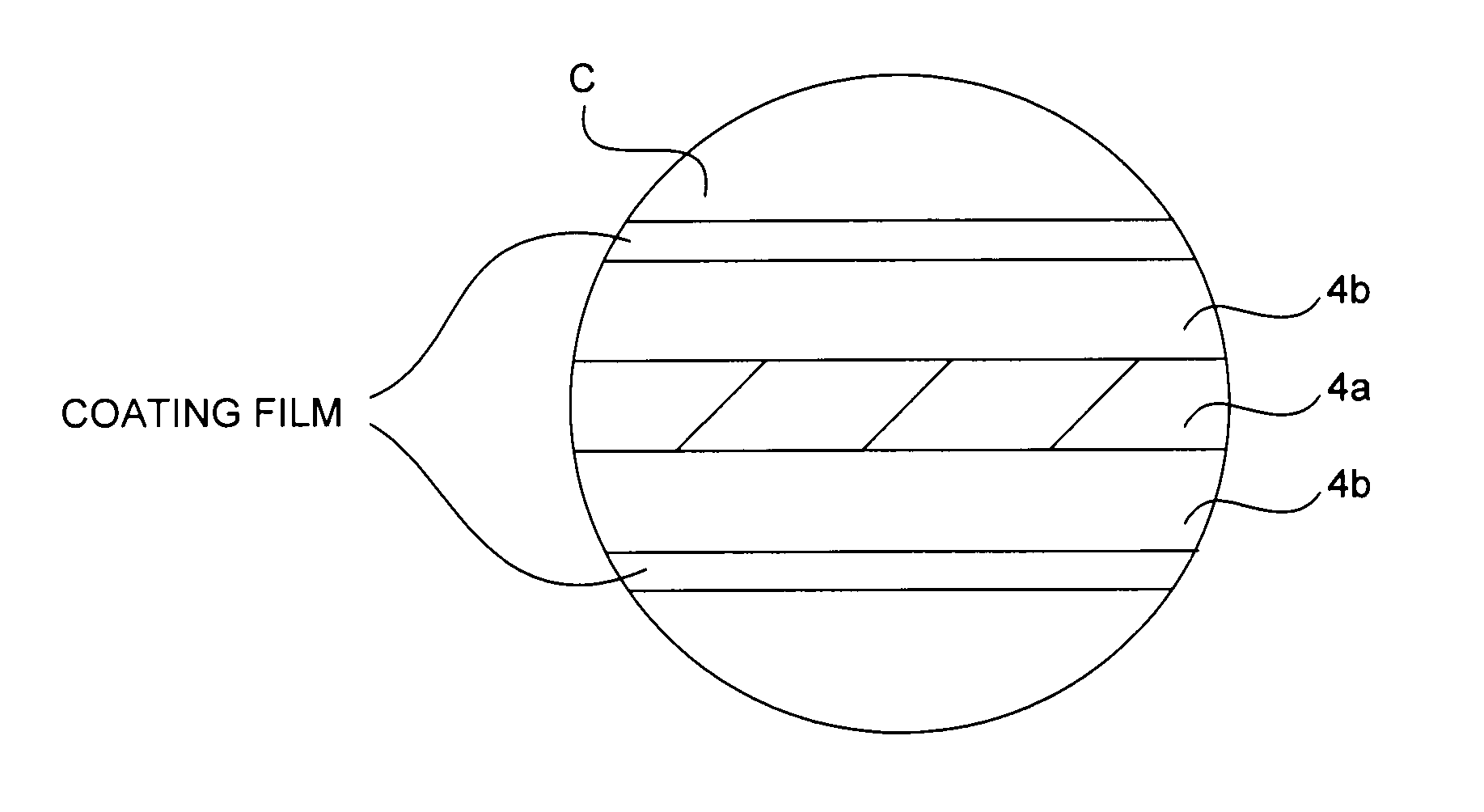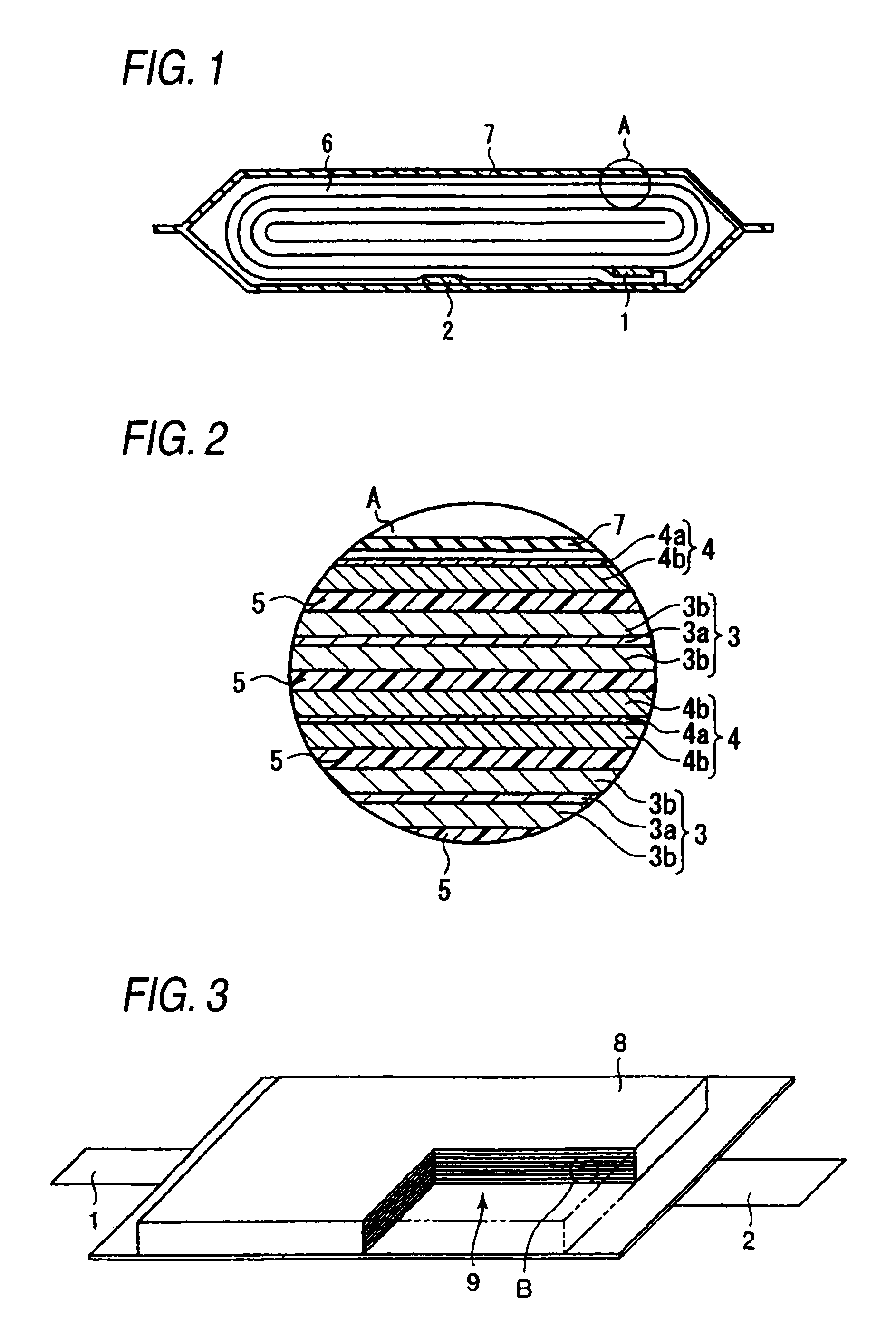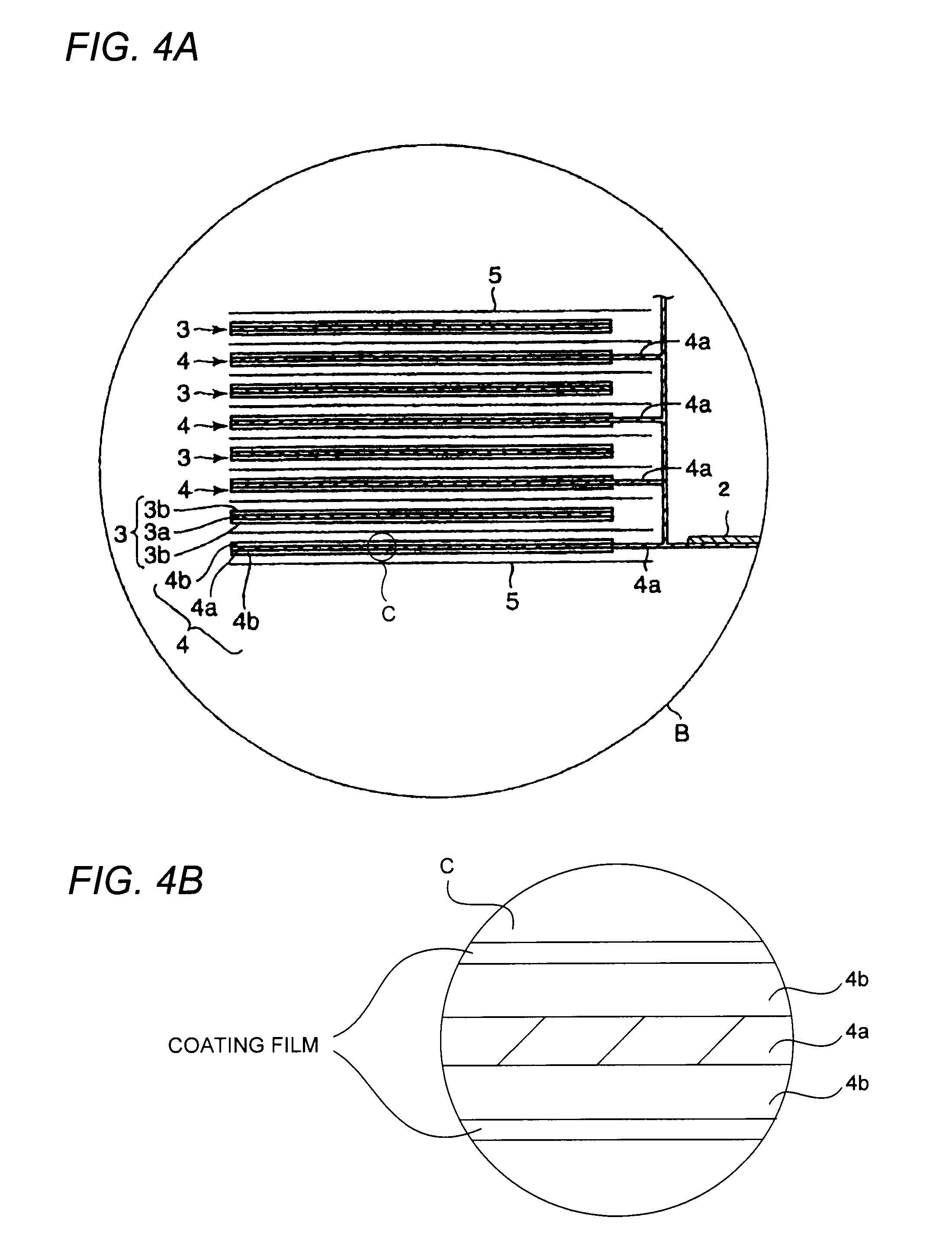Nonaqueous-electrolyte battery containing a negative electrode with a coating film formed by an isocyanate-containing compound in the nonaqueous electrolyte
a technology of negative electrodes and electrolyte, which is applied in the direction of non-aqueous electrolyte cells, cell components, cell component details, etc., can solve the problems of battery characteristics deterioration, and achieve satisfactory battery characteristics and enhanced safety
- Summary
- Abstract
- Description
- Claims
- Application Information
AI Technical Summary
Benefits of technology
Problems solved by technology
Method used
Image
Examples
example 1
[0126]
[0127]To N-methylpyrrolidone (NMP) were added 90% by weight lithium-manganese oxide (LiMn2O4) powder as a positive active material, 3% by weight acetylene black and 3% by weight graphite as conductive materials, and 4% by weight poly(vinylidene fluoride) (PVdF). The ingredients were mixed together to obtain a slurry. This slurry was applied to each side of a current collector which was an aluminum foil having a thickness of 15 μm. The slurry applied was dried, and the coated foil was pressed to thereby produce a positive electrode having an electrode density of 3.0 g / cm3.
[0128]
[0129]A spinel lithium titanate (Li4Ti5O12) powder having an average particle diameter of 0.84 μm, BET specific surface area of 10.8 m2 / g, and lithium insertion potential of 1.55 V (vs. Li / Li+) was prepared as a negative active material. The particle diameter of this negative active material was determined with a laser diffraction type distribution analyzer (SALD-300, manufactured by Shimadzu Corp.) by t...
examples 5 and 13
[0138]Nonaqueous-electrolyte secondary batteries were produced in the same manners as in Examples 4 and 10, except that 1,4-diisocyanatobutane was added in place of the 1,6-diisocyanatohexane in preparing the nonaqueous electrolytes.
examples 14 to 18
[0139]Nonaqueous-electrolyte secondary batteries were produced in the same manner as in Example 10, except that 1-isocyanatoethane, 2-isocyanatopropane, 1-isocyanatohexane, 1-isocyanatobutane, or 3-isocyanato-1-propene was added in place of the 1,6-diisocyanatohexane in preparing the nonaqueous electrolyte.
PUM
| Property | Measurement | Unit |
|---|---|---|
| reduction potential | aaaaa | aaaaa |
| temperature | aaaaa | aaaaa |
| average particle diameter | aaaaa | aaaaa |
Abstract
Description
Claims
Application Information
 Login to View More
Login to View More - R&D
- Intellectual Property
- Life Sciences
- Materials
- Tech Scout
- Unparalleled Data Quality
- Higher Quality Content
- 60% Fewer Hallucinations
Browse by: Latest US Patents, China's latest patents, Technical Efficacy Thesaurus, Application Domain, Technology Topic, Popular Technical Reports.
© 2025 PatSnap. All rights reserved.Legal|Privacy policy|Modern Slavery Act Transparency Statement|Sitemap|About US| Contact US: help@patsnap.com



